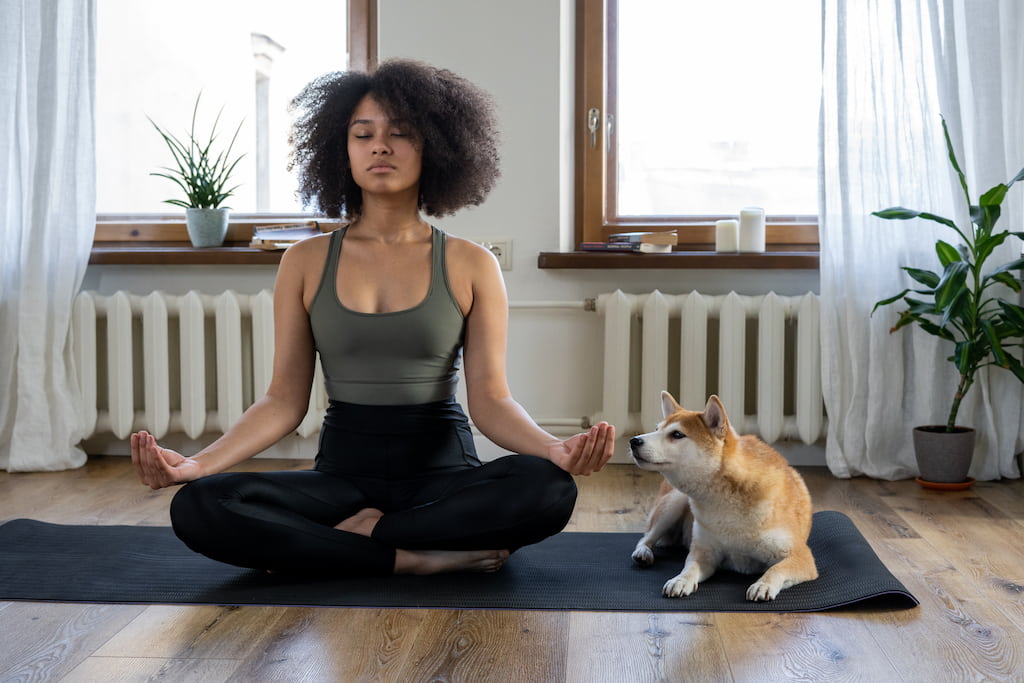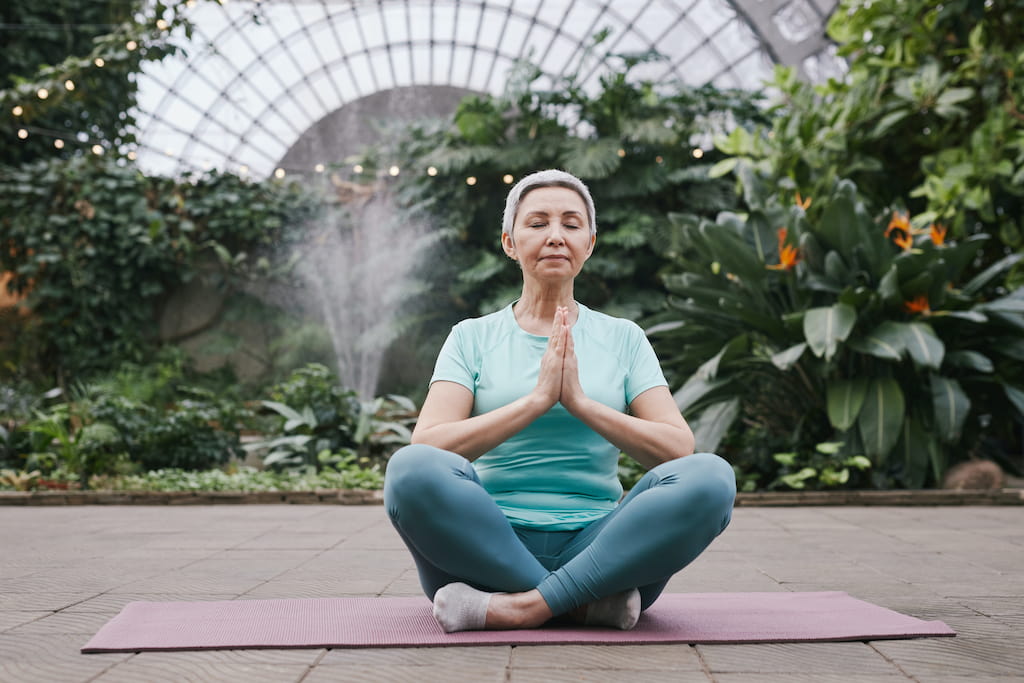What is Meditation and What is not?

Contents
When we talk about meditation, we think of different attitudes and different states of mind. Some people imagine sitting cross-legged in total silence, while others picture relaxing while listening to soothing music… Meditation exists in many cultures, and they use many different tools to transition into a meditative state. For hundreds of years, these teachings and practices have been passed down through generations through oral tradition. Although we have many written texts today, people still have questions about meditation. Meditation is a subjective concept, and there are differing viewpoints about what it “truly” is.

Awareness Meditation
First of all, meditation is not something we actually “do”. Meditation is a state and way of being. There are hundreds of different tools and practices that can help us reach this state. We often refer to the use of these tools and exercises as “meditation”. One of the most popular practices is seated awareness meditation. The posture used in this meditation has become almost synonymous with the practice. The seated cross-legged posture called “Zazen” in Zen Buddhism or the “Vipassana” sitting posture in Yoga teaching are two examples.
However, meditation is much more than just sitting in this position. Our mind works like a factory constantly producing thoughts. Scientists believe that we have thousands of thoughts every day. We still do not completely know how thoughts work, or their underlying mechanisms and causes. Yet, with developments in psychology and with our continuing practice, it is possible to discover the nature of our minds and how they are affected by meditation.

Misconceptions About Meditation
Observing Thoughts During Meditation
One of the most common misconceptions about meditation is the belief that it is about ‘not thinking’. You may believe that, “Since I can’t stop thinking, I can’t meditate” or you may have heard similar comments from people around you. That is why many people lose their interest and motivation for meditation. Trying to stop or block our thoughts would mean waging a war against our minds. Instead, meditation involves noticing and becoming aware of the flow of thoughts through our minds.
Are your thoughts too intense today? You can try to focus on this. Or is your mind still like a pool of water? Allow yourself to feel both the joy and transience of this state. The main thing is to increase our sensitivity to and awareness of all our states, as they change from moment to moment.
So, where do we start?
Instead of pushing our thoughts away or getting angry at ourselves when a thought pops into our mind, we can start by observing our thoughts without getting too involved in them. My teacher once shared an analogy which I found very insightful, “Imagine you are watching a movie and there are knights in armour and preparing for battle. Later, they ride their horses to the battlefield and fight tooth and nail with swords in their hands.
As the audience, we just watch them on the screen. But what if we were the knights, preparing for and then fighting in the battle?” Well, noticing the thoughts that constantly cross our minds, and constructing internal narratives about the past and the future is like going to war.
Being an audience to your thoughts
However, meditation is like being an audience to your thoughts. The scenarios we create in our minds can be exhausting: the future is full of infinite possibilities, and it is pointless to dwell on past incidents over which we have no control. When we meditate, we look for the tiny gaps between thoughts, gaps where we can rest. As we practice noticing and embracing these gaps, we improve our capacity to observe our thoughts. It is just like building a muscle.
It’s not always easy to notice these gaps, as it can be hard to see where our thoughts begin and end, or when a new trail of thought emerges. But there are various tools we can use when we start to meditate. Though the most widely-known tools are breath and body awareness, there are many other tools that can guide us to a meditative space. Meditation does not necessarily mean sitting still or being silent. In fact, some teachings claim that the transition to a meditative space is only possible after we get rid of our excess energy through healthy channels.
That is why the last pose in a yoga lesson is lying down to meditate. If sitting meditations have not worked for you so far, you can try moving meditation. Furthermore, we all have ways that we self-soothe, even though we may not realize it. For instance, doing arts and crafts might be your form of meditation. Have you ever been so caught up with what you were doing that you lost track of time? Perhaps dancing alone at home, swimming or taking a walk. This doesn’t mean you should seek a distraction from what is going on inside you by keeping yourself occupied. Any action that helps prevent you from over-thinking can be a form of meditation, and it is an excellent idea to try them!
How long does it take for meditation to work?
Another common misconception is expecting instant results. After spending some time sitting and noticing your breath, or using another meditation tool, it may be unrealistic to expect your mind to just empty. Just like any other skill, your ability to meditate will improve if you are patient and make it part of your daily routine. When your mind has spent years used to a specific level of activity it can’t change overnight.
The transition from being inside your mind to being an observer is actually meditation in itself. It takes patience and compassionate persistence, both during a single act of meditation and throughout the whole process. In addition to being something abstract that we experience inside our own minds, meditation is also a physical process; as we move beyond our daily habits, new neural pathways are formed in our brain. It is completely normal for this to take some time. So, rather than aiming to be “good” or “successful” at meditation, the main thing is to make it a routine part of your daily life.

Purpose of Meditation
Meditation is not about controlling your emotions or thoughts, or having a sharp focus. There are tools that we use to focus our mind, mainly using our senses. For instance, music or a gong is used in meditations to bring ourselves to the present moment via our senses. Many people also wrongly believe that your eyes have to be closed during meditation. In fact, you can use visual stimuli, shapes or colours during meditation. Sometimes, closing our eyes can even make us feel our inner space more intensely, and make it difficult to be present in meditation. If this happens to you, continue meditating with your eyes open.
However, staying entirely focused on our sensations is in fact a transition phase. As you become familiar with the structure and scope of your mind and thoughts, you actually shift away from living your life under their control, and develop a different perspective. Meditation can be described as a journey of discovery of your inner space. As you explore this space, you can free yourself from being controlled by your thoughts. Over time, it will become easier to transition to a life lived in the present moment.

Benefits of Meditation
Challenging emotions and mental distress are another important issue. Meditation has the power to transform our lives through raising awareness. As a result, we can observe its benefits in many areas. However, not every type of meditation is beneficial at every stage of our lives. Therefore, it can be difficult to try to focus on and experience emotions or situations that we are struggling to deal with. Building awareness helps you to look at these emotions with a clear mind, but you should not feel forced to do so; awareness includes being able to see this need, as well.
Seeing meditation as a way to relax is another common mistake. Meditation has a soothing and calming effect, as it regulates our brainwaves and affects our nervous system. But meditating just to relax is an incomplete and biased exercise. While conscious awareness creates a soothing and relaxing space, it can also create a space where we become aware of uncomfortable emotions and thoughts. Meditation also involves noticing these states.
As a result of the sedative effects of meditation, some people fall asleep while meditating or feel sleepy afterwards. This is very common, but if it happens all the time, it may be an indication of a tired mind or nervous system. If this happens to you, consider trying a different meditation technique, as meditation should not always lead you to drift off to sleep. Meditation is a practice that teaches us how to notice what we are and are not aware of. It is a state of cognition and being which marks the spaces in which we feel stuck or feel comfortable, and helps us to live life consciously.
Do you have any preconceptions or beliefs about meditation? Have the judgments or expectations you had before starting practicing meditation changed over time? We would love to hear from you if this article has changed your perspective on meditation or meditation techniques!
Translator: Ebru Peközer






